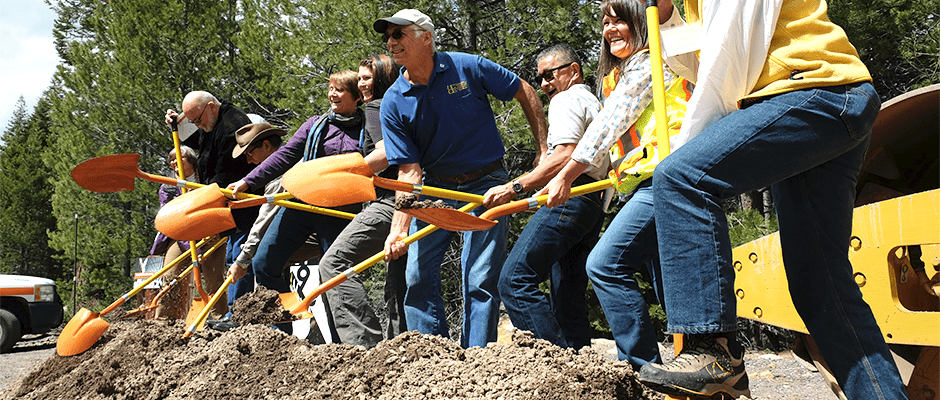Share this article
Matched underpasses offer insight into deer movement
In California’s Sierra Nevada Mountains, construction teams are carving two new wildlife underpasses beneath Highway 89. The concrete structures, nearly identical in size and shape, will do more than provide safe passage for wildlife. They will also serve as laboratories for studying how to make wildlife crossings better and cheaper.
“What’s really cool about these two structures is that they’re only a mile apart, and the drainages that they are put in are very similar,” said Sandra Jacobson, a wildlife biologist and specialist in transportation ecology with the U.S. Forest Service. “We’re putting in these two paired structures now with the intention of trying to actually experiment.” Jacobson coordinates the Highway 89 Stewardship Team, a multi-agency collaboration that has worked since 2003 to study and improve 25 miles of road through the Tahoe National Forest. The road itself, says Jacobson, is nothing special. On the contrary, it is representative of U.S. highways that see frequent deer-vehicle collisions, with two lanes, moderate traffic and a path that bisects a mule deer (Odocoileus hemionus) migration route. Lessons learned from the “experimental highway” could potentially be applied to tens of thousands of miles of highways across the U.S.
The team’s accomplishments to date include radio-collaring 89 individuals from a local deer herd, installing camera traps along the roadway and spearheading the area’s first underpass project, which the California Department of Transportation funded and completed in 2009. The department is also funding the two new underpasses, which will be completed this summer, says Jacobson.
Having two similar underpasses will help the researchers pinpoint the effects of different modifications. For example, they could install noise-blocking Styrofoam blocks on one underpass, then document whether deer prefer the quieter route. Later, they could move the blocks to the other underpass to see whether the deer follow. Another proposed experiment would involve placing boulders, stumps and other items in an underpass so smaller animals could use them as shelter.
One of the most potentially valuable experiments would reveal just how large an underpass for deer needs to be. The researchers would cover part of the opening with plywood, making it smaller and smaller until the deer turn away. Larger crossing structures are much more expensive, so this information could help transportation agencies build them more cheaply. And the cheaper the projects, the more of them agencies can afford.
Despite these big plans for research, Jacobson says the most remarkable part is the collaboration itself.
“When you have this grassroots collaboration, you can get a lot done that you can’t get done if you have just the Forest Service pushing, or just the California Department of Fish and Wildlife pushing,” she said. “That really is a model that other places can copy.”
Header Image: The Highway 89 Stewardship Team broke ground on two new wildlife crossing structures on May 2. The underpasses will help mule deer and other wildlife cross the road north of Lake Tahoe, CA. ©Faerthen Felix








